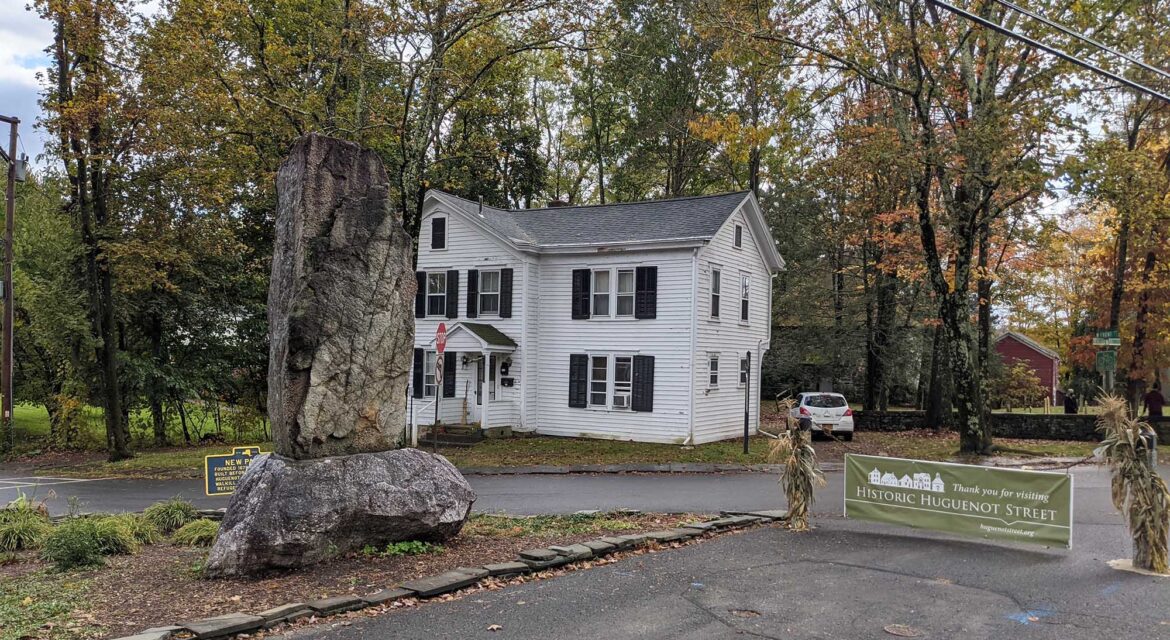 Historic Huguenot Street is a collection of historic stone-houses in New Paltz, New York. The 10-acre National Landmark Historic District features the most intact architectural concentration of late 17th and early 18th century stone houses in the United States, allowing visitors to learn about the region’s material culture, the founding of New Paltz and more. It preserves the history of the community while also allowing visitors to experience the people and places that defined it in a profound way.
Historic Huguenot Street is a collection of historic stone-houses in New Paltz, New York. The 10-acre National Landmark Historic District features the most intact architectural concentration of late 17th and early 18th century stone houses in the United States, allowing visitors to learn about the region’s material culture, the founding of New Paltz and more. It preserves the history of the community while also allowing visitors to experience the people and places that defined it in a profound way.

Celebrating the Origins of the French Huguenot Community
 The buildings that make up Historic Huguenot Street were built in the early 18th century by the descendants of French Huguenot settlers that had fled discrimination and religious persecution in Europe. After settling on the banks of the Wallkill River in 1678, the French Huguenot community grew and developed over the 17th and 18th centuries, creating many of the buildings that now define Historic Huguenot Street.
The buildings that make up Historic Huguenot Street were built in the early 18th century by the descendants of French Huguenot settlers that had fled discrimination and religious persecution in Europe. After settling on the banks of the Wallkill River in 1678, the French Huguenot community grew and developed over the 17th and 18th centuries, creating many of the buildings that now define Historic Huguenot Street.
The 1799 LeFevre House, Deyo House, Abraham Hasbrouch House, Crispell Memorial Church and Esopus Munsee wigwam replica are just a few of the locations that audiences can experience across the site. Each house and site has a detailed and specific history associated with it.
The entire district has been included in the National Register of Historic Places since the Register was created in 1966 and was designated a National Historic Landmark in 1960, highlighting the many different ways the site has been celebrated. Doing so is the result of a community effort to ensure this history was both protected and cultivated.

The Dedication of Community
 Founded in 1894 by the descendants of the first settlers, the Historic Huguenot Street organization was created to preserve what remained of the French and Dutch heritage that defined New Paltz. The organization owns and operates all of the buildings that define the landmark.
Founded in 1894 by the descendants of the first settlers, the Historic Huguenot Street organization was created to preserve what remained of the French and Dutch heritage that defined New Paltz. The organization owns and operates all of the buildings that define the landmark.
The Jean Hasbrouck House was the first house museum purchased by the Historic Huguenot Street organization, with the other stone houses in the district being purchased over the decades and subsequently opened as museums. The organization began offering related educational and informative programming to the public in the 1980s.
As a direct source of revenue, the Museum Shop offers a variety of handmade and local items specific to the Hudson Valley and the surrounding region. Items for sale include gifts, books, jewelry and décor that has been inspired by the historic houses and archives. Donations are another means of support that the Historic Huguenot Street organization relies on to enable growing programs and educational opportunities.
Programs for all ages take place year-round, with guided tours available most of the year and through appointment. A calendar of events highlights the many happenings that connect residents and attract visitors from across the region, highlighting what it can look like for a community to preserve, protect and promote the history it contains.

The Oldest Authentic Museum Street in America
 As the oldest authentic museum street in America, the fact that the house museums of Historic Huguenot Street are in their original village setting showcases how much of the history they represent has been retained. Few sites have the sort of history that Historic Huguenot Street has but the long-term effort to protect and cultivate this history has enabled experiences with it that might have otherwise been lost. Doing so highlights what it can mean for such efforts to shape spaces and entire communities in the present for the future.
As the oldest authentic museum street in America, the fact that the house museums of Historic Huguenot Street are in their original village setting showcases how much of the history they represent has been retained. Few sites have the sort of history that Historic Huguenot Street has but the long-term effort to protect and cultivate this history has enabled experiences with it that might have otherwise been lost. Doing so highlights what it can mean for such efforts to shape spaces and entire communities in the present for the future.

